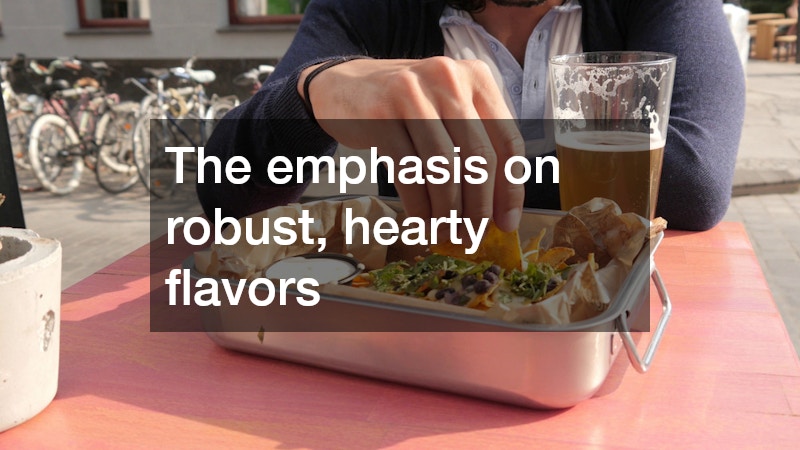Mexican cuisine is as varied and vibrant as the landscapes and communities where it’s prepared. Across the United States, local Mexican food reflects a blend of tradition, regional ingredients, and cultural influences, resulting in distinct flavors from state to state. Join our journey through different regions, highlighting how geography, heritage, and creativity shape the dishes you’ll find on the table.
Southwest Staples: Bold Flavors and Border Influences
The Southwest region of the United States is often dubbed the heartland of Mexican food, showcasing a rich blend of flavors that have evolved over centuries. Border towns such as El Paso, Texas, and San Diego, California, serve as melting pots where traditional Mexican recipes intermingle with American influences, creating a distinct Southwestern palate. Ingredients like chiles, corn, beans, and avocados are staples, while dishes such as enchiladas, tamales, and chile con carne celebrate the essence of this fusion.
Arizona’s cuisine boasts unique variations, with an emphasis on Native American culinary traditions. Dishes like Navajo tacos—made with fry bread—highlight how diverse cultural influences contribute to local food identity. The region’s love for smoky chipotle and fresh cilantro adds depth to traditional recipes, inviting foodies to explore a completely different side of local Mexican food.
Notably, the Southwest is home to many local festivals celebrating its culinary heritage, featuring food tastings, cooking demonstrations, and artisan markets. These events not only showcase the region’s beloved dishes but also serve as a platform for chefs and home cooks to share stories about their family recipes and traditions, reinforcing the importance of community and heritage in food culture.
California’s Fresh Take on Local Mexican Food
California has redefined the landscape of Mexican cuisine, infusing it with a focus on fresh produce and innovation. The farm-to-table movement has profoundly affected how Mexican food is prepared and consumed, with chefs emphasizing organic ingredients sourced from local farms. Tacos filled with grilled veggies, fish, or sustainably raised meats are just a few examples of this fresh approach, pushing the boundaries of traditional recipes.
Californian-style burritos have become synonymous with the state, especially in cities like San Francisco and Los Angeles, where culinary influences have paved the way for creative twists. The popular “mission burrito,” featuring oversized portions and endless fillings, exemplifies this evolution, appealing to modern tastes while still paying homage to its roots. With fresh salsa and guacamole as essential accompaniments, these burritos exemplify the fusion of traditional and contemporary culinary techniques.
Tex-Mex Traditions Deep in the Heart of Texas
In Texas, Tex-Mex cuisine stands as a defining characteristic of the state’s culinary identity. This unique fusion stems from the blending of traditional Mexican food with American influences, resulting in rich, savory dishes that pack a flavorful punch. Fajitas, nachos, and quesadillas are just a few favorites that have emerged from this regional cuisine, often accompanied by spicy salsa and warm tortillas.
Houston, Dallas, Austin, and San Antonio each offer their interpretation of Tex-Mex, contributing a rich tapestry of flavors that celebrate both Mexican and American traditions. The emphasis on robust, hearty flavors often translates into larger serving sizes, which embody Texas’s larger-than-life ethos. Additionally, the importance of barbecue elements in Tex-Mex dishes showcases regional pride and culinary adaptation, providing a unique experience for diners.
The vibrant Tex-Mex restaurant scene has also created a culture around shared meals, where families and friends gather to enjoy savory dishes and craft cocktails. Local Mexican food establishments often serve as cultural hubs, enabling chefs to share their heritage and culinary stories, thus preserving the longstanding traditions that have shaped Tex-Mex cuisine over the years.
Unexpected Mexican Food Finds in the Midwest and Beyond
While not typically recognized for its Mexican food, the Midwest presents an intriguing landscape of unexpected culinary offerings that celebrate Mexican traditions. States like Illinois, Wisconsin, and Michigan are home to vibrant Mexican communities, each bringing its influence and interpretation to the local food scene. In Chicago, for instance, the area known as Pilsen showcases colorful murals alongside authentic taquerias where families gather to eat traditional fare.
Midwestern Mexican cuisine often embraces regional ingredients and comfort foods, from hearty tamales to chicken mole. The creative use of local produce leads to innovative dishes that reflect both Mexican origins and Midwestern hospitality. As more Mexicans and Mexican-Americans settle in these states, they’re bringing authentic recipes that add richness to the region’s culinary landscape.
In recent years, food festivals and pop-up restaurants have gained popularity, highlighting Midwestern chefs who are eager to explore Mexican flavors and techniques. These venues often serve as platforms for culinary exchange, celebrating a new wave of local Mexican food culture that embraces both traditional and modern elements, ensuring that regional food pride thrives throughout the Midwest and beyond.
The culinary world of local Mexican food is colorful, with regional varieties reflecting each locality’s unique identity and cultural heritage. From the bold flavors of the Southwest to the fresh interpretations in California, the heartwarming comfort of Tex-Mex in Texas, and even the unexpected treasures of the Midwest, each represents a tapestry of flavors that showcases Mexican culinary traditions. As Mexican cuisine continues to thrive across different states, the importance of pride in local Mexican food is clear as communities celebrate their unique interpretations.



